Saint Paul Island (France): An Unexplored Paradise in the Southern Indian Ocean
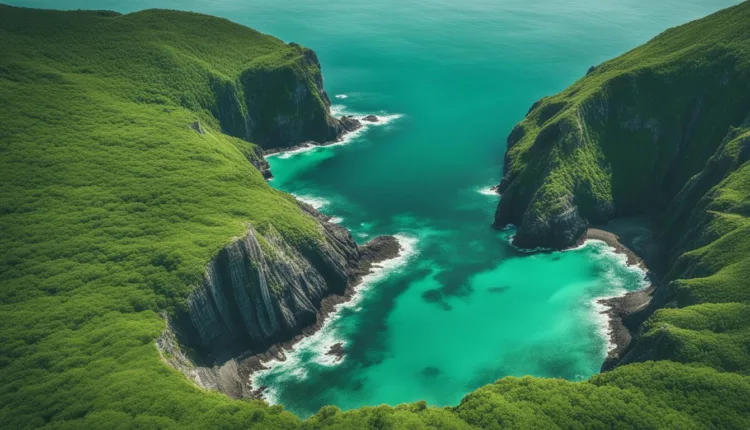
I’m Olivia Grace, your travel advisor, and today I want to introduce you to a hidden gem in the Southern Indian Ocean – Saint Paul Island. Located in the French Indian Ocean Territory known as the French Southern and Antarctic Lands, this unspoiled paradise offers breathtaking landscapes, diverse wildlife, and a rich history waiting to be discovered.
With its remote location and pristine beauty, Saint Paul Island is a haven for adventurers and nature enthusiasts. Whether you’re interested in exploring volcanic landscapes, spotting endemic wildlife, or simply relaxing on pristine beaches, this island has something to offer everyone.
Join me as we delve into the history of Saint Paul Island, uncover its unique wildlife, and discover the best activities and attractions to make the most of your visit. From exploring nearby destinations to indulging in the local cuisine, this travel guide will provide you with all the information you need for an unforgettable journey.
Key Takeaways:
- Explore the hidden paradise of Saint Paul Island in the Southern Indian Ocean.
- Discover the rich history and diverse wildlife of this French Indian Ocean Territory.
- Uncover the top attractions and activities to make the most of your visit to Saint Paul Island.
- Experience the unique cuisine and indulge in the flavors of the island.
- Plan your trip strategically by considering the weather and practical tips for visiting.
Location and Geography of Saint Paul Island
Saint Paul Island, located in the Southern Indian Ocean, is a captivating destination that offers a unique travel experience. Situated approximately 500 miles east of Madagascar, this remote island is part of the French Indian Ocean Territory, known as the French Southern and Antarctic Lands. With its volcanic landscapes and stunning natural beauty, Saint Paul Island is a hidden gem waiting to be explored.
The island’s geography is characterized by its rugged coastline, rocky cliffs, and pristine sandy beaches. The volcanic origins of Saint Paul Island have shaped its dramatic landscapes, with Mount Saint-Paul standing as the island’s highest point. The surrounding Southern Indian Ocean creates a serene and tranquil environment, providing visitors with a peaceful getaway from the bustling world.
Surrounded by crystal-clear waters, Saint Paul Island is home to a variety of marine life, making it a perfect destination for snorkeling and diving enthusiasts. The island’s remote location and untouched environment create a haven for wildlife, with many endemic species thriving in its unique ecosystem. Visitors can witness the beauty of albatrosses, petrels, seals, sea lions, and penguins, among other fascinating creatures.
Whether you’re an adventure seeker or a nature lover, Saint Paul Island offers an enchanting experience that will leave you in awe of its natural wonders. From exploring volcanic landscapes to encountering diverse wildlife, this destination has something for everyone. Discover the unspoiled paradise of Saint Paul Island and immerse yourself in its captivating beauty.
History of Saint Paul Island
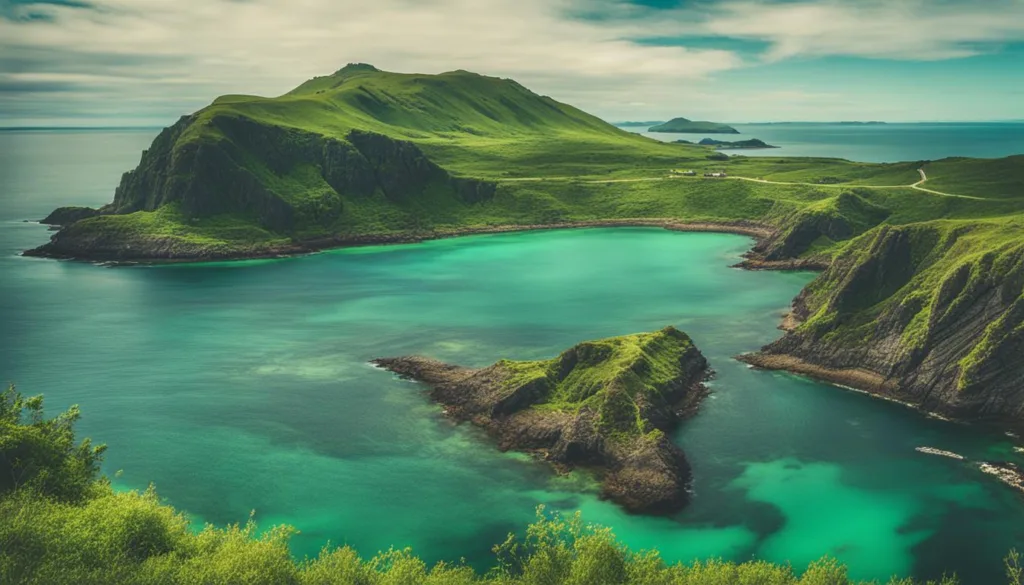
Saint Paul Island has a rich and intriguing history that spans centuries. The island was first discovered by European explorers in the 16th century, with the Portuguese being the first to spot it. However, their attempts at colonization were unsuccessful. It wasn’t until the French took control of the island that it became a part of the French Indian Ocean Territory.
Over the years, Saint Paul Island has served as a strategic outpost for explorers, researchers, and sailors. Its remote location and natural resources made it an important stopover for ships traveling between Europe and the Indian Ocean. The island was also a key base for scientific expeditions, contributing to important discoveries and research in the region.
Today, the history of Saint Paul Island can still be seen in its old settlements, lighthouses, and other historic sites. These remnants of the past offer a glimpse into the island’s fascinating heritage and the challenges faced by those who once called it home.
Exploration of Saint Paul Island
Exploration of Saint Paul Island has played a significant role in uncovering its natural wonders and understanding its unique ecosystem. Scientists and researchers have ventured to the island to study its diverse wildlife and gain insights into the effects of isolation on species evolution.
One of the notable explorations of Saint Paul Island was carried out by The Kerguelen Plateau Benthos (KEPEP) research program. This expedition focused on studying the island’s marine biodiversity and mapping the seafloor surrounding it. The findings from this research have provided valuable information about the conservation of the island’s fragile ecosystem.
The exploration of Saint Paul Island continues to this day, as scientists and researchers strive to unravel the mysteries of its natural history and contribute to its preservation for future generations.
Colonization of Saint Paul Island
Although Saint Paul Island was initially discovered by the Portuguese, it was the French who eventually established a presence on the island. The French colonization of the island played a crucial role in shaping its history and cultural heritage.
The French claimed Saint Paul Island as part of the French Indian Ocean Territory, which also includes other islands in the region. The strategic location of the island made it a valuable asset for France, both economically and militarily. It served as a supply base for French ships and a point of defense in the Indian Ocean.
Today, the influences of French colonization can still be seen in the architecture, cuisine, and language of Saint Paul Island. The island’s unique blend of French and Creole cultures creates a distinct and vibrant atmosphere that adds to its allure as a travel destination.
Wildlife and Nature on Saint Paul Island
Saint Paul Island is a haven for wildlife enthusiasts and nature lovers. Its untouched natural environment and diverse ecosystems make it a paradise for biodiversity. The island is home to numerous endemic species that can be found nowhere else in the world, making it a truly unique destination for wildlife enthusiasts.
The rich marine life surrounding Saint Paul Island is a sight to behold. The crystal-clear waters teem with a variety of fish and other aquatic creatures, making it a favorite spot for diving and snorkeling. Visitors can witness the vibrant colors of the coral reefs and swim alongside schools of tropical fish.
But it’s not just underwater where the wildlife thrives. Above the surface, the island is home to a variety of bird species, including albatrosses and petrels. These magnificent creatures can be observed in their natural habitats as they soar through the sky or nest on rocky cliffs. The island’s remote location and limited human interference have helped preserve the integrity of these ecosystems, allowing wildlife to flourish.
Table: Endemic Species on Saint Paul Island
| Species | Status |
|---|---|
| Saint Paul Island flying fox | Endangered |
| Saint Paul Island rail | Critically endangered |
| Saint Paul Island blue-eyed shag | Vulnerable |
| Saint Paul Island petrel | Endangered |
| Saint Paul Island skink | Vulnerable |
These endemic species are a testament to the unique environment and conservation efforts on Saint Paul Island. The island’s commitment to preserving its natural heritage ensures that future generations can continue to marvel at the incredible biodiversity that exists here.
Exploring Saint Paul Island
When visiting Saint Paul Island, there is an abundance of attractions and activities that await. Whether you’re a nature enthusiast, history buff, or simply looking to relax in a stunning setting, there is something for everyone on this unspoiled paradise in the Indian Ocean.
Attractions and Sightseeing
One of the main draws of Saint Paul Island is its natural beauty and diverse landscapes. From volcanic formations to pristine beaches, there is no shortage of stunning sights to explore. Be sure to visit the lookout points that offer breathtaking views of the island’s picturesque coastline and surrounding ocean. These vantage points provide the perfect backdrop for capturing memorable photos.
Additionally, history lovers will appreciate the island’s historic sites, such as old settlements and lighthouses. These landmarks offer a glimpse into the island’s fascinating past and showcase its rich cultural heritage. Guided tours are available for those who wish to delve deeper into the island’s history and learn more about its significance.
Activities and Things to Do
For those seeking adventure, there are plenty of activities to keep you entertained on Saint Paul Island. Diving and snorkeling enthusiasts can explore the vibrant marine life and coral reefs that teem beneath the crystal-clear waters. The island’s diverse underwater ecosystem is a haven for marine enthusiasts and provides an unforgettable experience.
Nature walks are another popular activity on Saint Paul Island. These guided hikes allow you to discover the island’s unique flora and fauna while enjoying the fresh air and beautiful scenery. Along the way, you may encounter endemic bird species, such as albatrosses and petrels, adding to the island’s allure.
| Attractions | Sightseeing | Activities | Things to Do |
|---|---|---|---|
| Volcanic formations | Lookout points | Diving | Snorkeling |
| Historic sites | Coastline views | Nature walks | Exploring marine life |
| Beaches | Cultural landmarks | Guided tours | Observing endemic bird species |
With its array of attractions, sightseeing opportunities, and activities, Saint Paul Island offers a truly unforgettable experience for travelers looking to immerse themselves in this hidden paradise.
Saint Paul Island Travel Guide
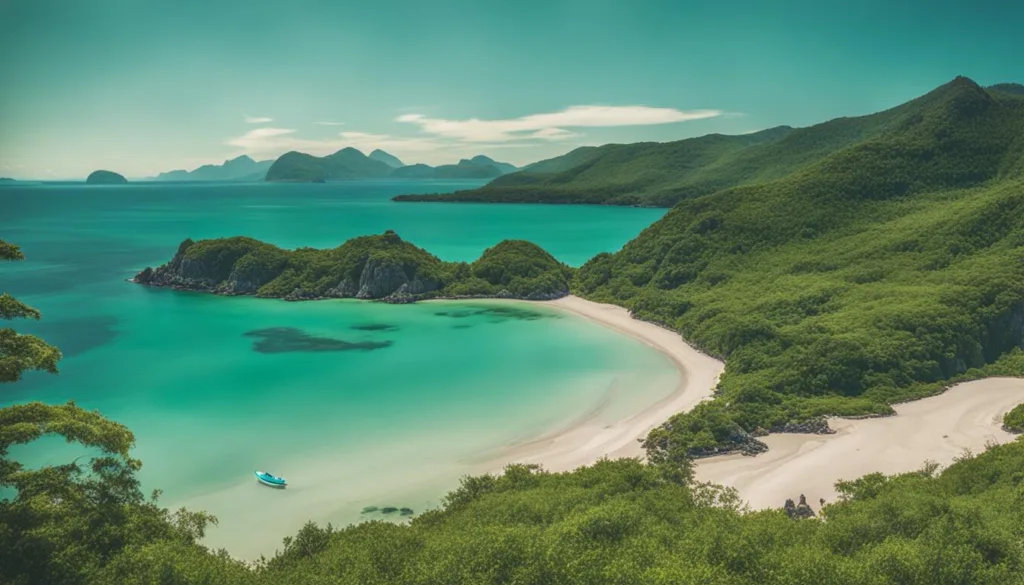
When planning a trip to Saint Paul Island, it’s essential to have a comprehensive travel guide to ensure a smooth and enjoyable experience. Here is a complete guide to getting to Saint Paul Island, finding accommodations, and exploring transportation options:
Getting to Saint Paul Island
Reaching Saint Paul Island requires careful planning due to its remote location in the Southern Indian Ocean. The most convenient way to reach the island is by taking a flight to Réunion Island, which is a larger island nearby with regular international connections. From Réunion Island, travelers can then catch a connecting flight to Saint Paul Island. It’s important to check flight schedules and availability in advance, as there are limited flights to the island.
Accommodations on Saint Paul Island
While Saint Paul Island may be off the beaten path, it offers a range of accommodations to suit different preferences and budgets. Visitors can choose from small hotels and guesthouses that offer a cozy and authentic experience. It’s advisable to book accommodations well in advance, as availability may be limited. Additionally, staying in accommodations closer to the coast allows for convenient access to the island’s attractions and activities.
Transportation on Saint Paul Island
Getting around Saint Paul Island is relatively easy, as the island is small and can be explored on foot or by renting a bicycle. Renting a bicycle is a popular option among tourists, as it allows for a leisurely exploration of the island’s scenic landscapes and attractions. Taxis are also available for travelers who prefer a more convenient mode of transportation. It’s important to note that there is no public transportation system on the island.
| Travel Guide | Getting to Saint Paul Island | Accommodations on Saint Paul Island | Transportation on Saint Paul Island |
|---|---|---|---|
| Information | Reaching the island via Réunion Island | Range of accommodations available | Exploring on foot or renting a bicycle |
| Important Details | Check flight schedules and availability in advance | Book accommodations in advance due to limited availability | Taxis are available for a more convenient mode of transportation |
Must-See Attractions on Saint Paul Island
When visiting Saint Paul Island, there are several must-see attractions that should not be missed. From stunning viewpoints to historic sites, here is a list of top sights and popular landmarks:
1. Viewpoints and Volcanic Landscapes
One of the highlights of Saint Paul Island is its breathtaking viewpoints that offer panoramic vistas of the island’s volcanic landscapes. Be sure to visit the viewpoint at Cap de Bonne Espérance, where you can marvel at the rugged cliffs and crashing waves. Another must-see is the Caldeira, a volcanic crater that showcases the island’s geological wonders.
2. Historic Sites and Lighthouses
Explore the island’s rich history by visiting its historic sites and lighthouses. Discover old settlements that date back to the island’s colonization and learn about the early sailors and explorers who arrived here. Don’t miss the opportunity to visit the iconic Phare du Bout du Monde, the lighthouse that stands as a symbol of Saint Paul Island.
3. Wildlife Sanctuaries and Nature Reserves
Saint Paul Island is renowned for its diverse wildlife, and visiting the island’s wildlife sanctuaries and nature reserves is a must. Immerse yourself in the natural beauty of the island and observe the unique species that call it home. Look out for the graceful albatrosses, playful seals, and adorable penguins that inhabit these protected areas.
Complete Table: Top Sights and Landmarks on Saint Paul Island
| Sight/Landmark | Description |
|---|---|
| Cap de Bonne Espérance | A viewpoint offering stunning vistas of the island’s volcanic landscapes and rugged cliffs. |
| Caldeira | A volcanic crater showcasing the island’s geological wonders. |
| Phare du Bout du Monde | An iconic lighthouse symbolizing Saint Paul Island’s history and maritime heritage. |
| Wildlife Sanctuaries | Protected areas where visitors can observe the diverse wildlife, including albatrosses, seals, and penguins. |
Visiting these must-see attractions on Saint Paul Island will allow you to fully immerse yourself in the beauty and history of this unexplored paradise. Whether you’re captivated by the volcanic landscapes, fascinated by the island’s wildlife, or intrigued by its rich heritage, Saint Paul Island offers a truly unforgettable travel experience.
Cuisine and Dining on Saint Paul Island
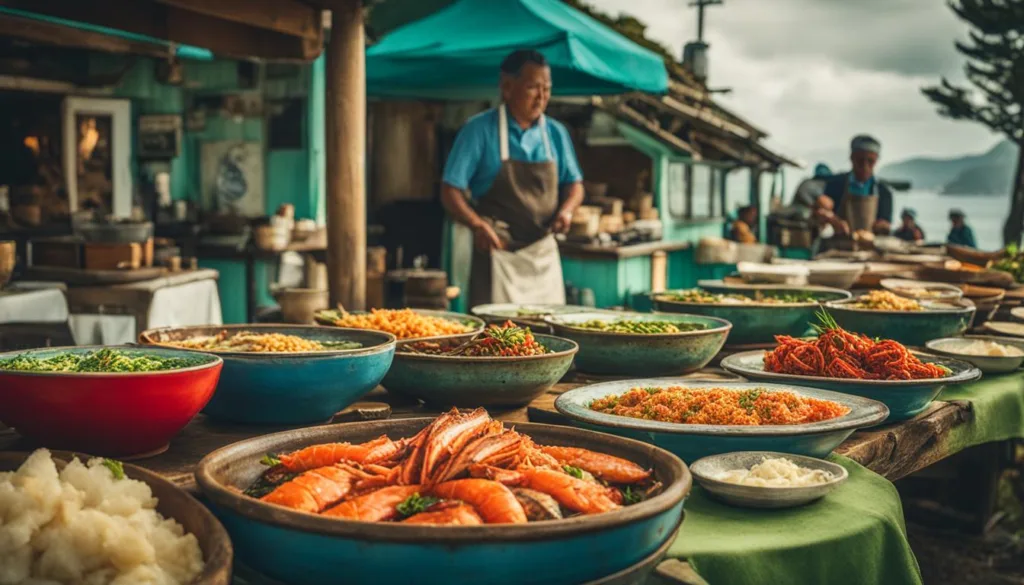
When it comes to cuisine on Saint Paul Island, visitors can expect a delightful blend of flavors and influences. The local food reflects the island’s rich cultural heritage, combining traditional Creole dishes with French culinary techniques. One popular attraction for food enthusiasts is the island’s fresh seafood, caught daily by local fishermen. From succulent fish to delectable shellfish, the seafood on Saint Paul Island is a must-try for all visitors.
Restaurants on the island offer a range of dining options, from casual beachfront eateries to fine dining establishments. These establishments often feature menus that showcase the finest local ingredients and highlight the unique flavors of the island. Whether sampling a classic Creole dish or indulging in a French-inspired creation, the cuisine on Saint Paul Island is sure to satisfy every palate.
“The local cuisine on Saint Paul Island is a true reflection of its cultural identity. The fusion of Creole and French influences creates a culinary experience that is both unique and delicious. From the fresh seafood to the vibrant spices, each bite tells a story of the island’s history and flavors.”
For those looking to immerse themselves in the local food scene, participating in a cooking class or food tour is highly recommended. These experiences provide an opportunity to learn about the island’s culinary traditions and techniques, as well as sample a variety of dishes. Whether dining in a charming local restaurant or trying your hand at cooking a traditional dish, the cuisine on Saint Paul Island is sure to leave a lasting impression.
Local Food Highlights:
- Freshly caught seafood, including fish and shellfish
- Creole dishes with a French twist
- Flavorful spices and herbs
- Unique tropical fruits and vegetables
- Delicious pastries and desserts influenced by French patisseries
| Restaurant | Cuisine | Location |
|---|---|---|
| Le Papillon | French-Creole fusion | Beachfront |
| Chez Marie | Seafood | Harbor |
| La Table d’Émile | Traditional Creole | Town center |
| Le Jardin des Saveurs | Tropical-inspired cuisine | Botanical garden |
Weather and Best Time to Visit Saint Paul Island
When planning a trip to Saint Paul Island, it is important to consider the weather and choose the best time to visit. The island experiences a subtropical climate, with warm temperatures and high humidity throughout the year. However, there are certain seasons that offer more favorable conditions for travelers.
The best time to visit Saint Paul Island is during the austral summer, which lasts from November to April. During these months, the weather is generally mild and pleasant, with temperatures ranging from 70°F to 80°F (21°C to 27°C). This is the perfect time to explore the island’s stunning natural beauty and engage in outdoor activities.
It’s worth noting that Saint Paul Island can experience strong winds and occasional cyclones, especially during the summer months. Travelers should plan their visit accordingly and stay updated on the weather conditions to ensure a safe and enjoyable trip.
| Season | Weather | Temperature |
|---|---|---|
| Austral Summer (November – April) | Mild and Pleasant | 70°F – 80°F (21°C – 27°C) |
| Austral Winter (May – October) | Cool and Windy | 60°F – 70°F (16°C – 21°C) |
During the austral winter, from May to October, the weather on Saint Paul Island is cooler and windier. Temperatures range from 60°F to 70°F (16°C to 21°C), making it a suitable time for travelers who prefer cooler climates. It’s important to note that the winter months can bring rough seas and challenging conditions for outdoor activities, so it’s advisable to check with local authorities and tour operators before planning any excursions.
Ultimately, the best time to visit Saint Paul Island depends on personal preferences and the type of experience you are seeking. Whether you choose to visit during the mild summer or the cooler winter months, the island’s natural beauty and unique attractions await, offering a memorable travel experience.
Practical Tips for Visiting Saint Paul Island
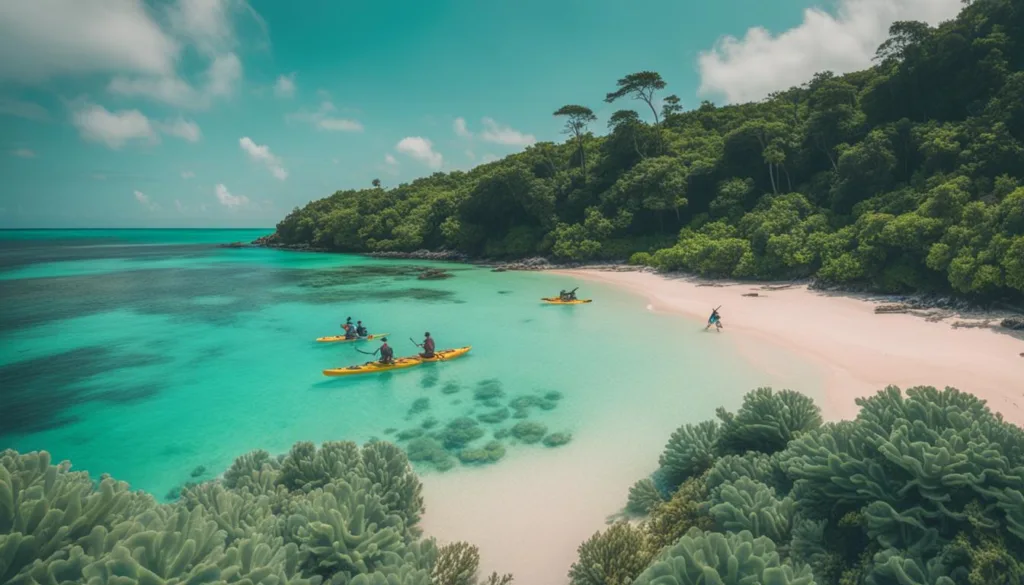
Planning a trip to Saint Paul Island? Here are some practical tips to help you make the most of your visit:
1. Pack the Essentials
When packing for your trip to Saint Paul Island, be sure to include essentials such as sunscreen, insect repellent, and comfortable walking shoes. The island’s subtropical climate means you’ll likely be spending a lot of time outdoors, so it’s important to protect yourself from the sun and insects. Additionally, comfortable footwear will ensure you can explore the island’s diverse landscapes with ease.
2. Check Visa Requirements
Before traveling to Saint Paul Island, it’s important to check whether you require a visa. As part of the French Indian Ocean Territory, the island has specific entry requirements for different nationalities. Make sure to research and obtain the necessary visa well in advance to avoid any last-minute complications.
3. Stay Updated on Weather Conditions
While Saint Paul Island generally experiences mild and pleasant weather, it’s important to stay updated on any changes or extreme conditions. The island can occasionally experience strong winds and cyclones, so it’s advisable to monitor weather forecasts and follow any safety instructions provided by local authorities.
4. Respect the Natural Environment
Saint Paul Island is renowned for its pristine natural environment and diverse wildlife. As a responsible traveler, it’s important to respect and protect the island’s ecosystem. Stay on designated trails, avoid littering, and follow any guidelines provided by local authorities to preserve the island’s beauty for future generations.
5. Prepare for Limited Accommodation Options
Due to its remote location, Saint Paul Island has limited accommodation options. It’s recommended to book your accommodations well in advance to secure your preferred choice. The island offers small hotels and guesthouses that provide a comfortable and authentic experience, allowing you to immerse yourself in the island’s unique ambiance.
| Essentials to Pack | Visa Requirements | Weather Updates | Respecting the Environment | Accommodation |
|---|---|---|---|---|
| Sunscreen | Check visa requirements prior to travel | Monitor weather forecasts and updates | Stay on designated trails and avoid littering | Book accommodations in advance |
| Insect repellent | Obtain necessary visa well in advance | Follow safety instructions from local authorities | Respect wildlife and natural habitats | Choose from small hotels and guesthouses |
| Comfortable walking shoes | Stay informed about entry requirements | Stay alert to changes in weather conditions | Support local conservation initiatives | Experience an authentic stay on the island |
Safety and Security on Saint Paul Island
When traveling to Saint Paul Island, it is important to prioritize safety and security to ensure a smooth and enjoyable trip. While the island is generally a safe destination, it is always wise to take precautionary measures and be aware of your surroundings.
To ensure your safety on Saint Paul Island, here are some travel safety tips to keep in mind:
- Stay alert and aware of your surroundings at all times. Pay attention to any potential risks or hazards in the area.
- Stick to well-lit and populated areas, especially at night. Avoid isolated areas, particularly if you are traveling alone.
- Keep your belongings secure and within sight. Use lockers or safes provided by your accommodations to store valuables.
- Follow any local guidelines and regulations. Respect the natural environment and wildlife, and avoid activities that may harm or disturb them.
- Stay updated on weather conditions, especially during cyclone season. Be prepared for strong winds and storms by following any advisories or warnings.
By following these safety tips, you can ensure a safe and enjoyable experience on Saint Paul Island.
Emergency Contacts
It is always important to have emergency contacts readily available while traveling. On Saint Paul Island, the following emergency numbers can be used:
| Emergency Service | Contact Number |
|---|---|
| Police | 112 |
| Ambulance | 112 |
| Fire Department | 112 |
| Tourist Information Center | +123 456 7890 |
It is recommended to save these numbers in your phone or have them written down in case of an emergency.
Sustainable Tourism on Saint Paul Island
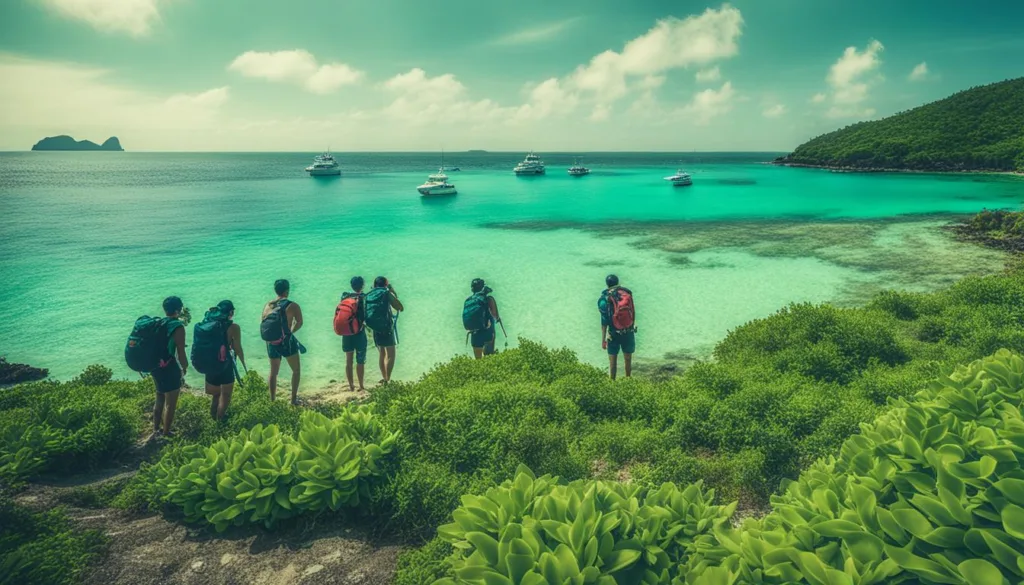
When visiting Saint Paul Island, it is essential to engage in sustainable tourism practices to preserve its pristine environment. By being conscious of our impact and making eco-friendly choices, we can help protect the island’s natural beauty for future generations to enjoy. Responsible travel on Saint Paul Island is not only beneficial to the environment but also offers a more immersive and authentic experience for visitors.
One of the key principles of sustainable tourism on Saint Paul Island is minimizing our carbon footprint. Consider using public transportation or renting bicycles to explore the island instead of relying on private vehicles. Choose accommodations that implement eco-friendly practices, such as energy-efficient systems and waste recycling programs. Additionally, support local businesses that prioritize sustainability and offer locally sourced products.
Respecting the island’s natural habitats and wildlife is another crucial aspect of responsible travel on Saint Paul Island. Stick to designated trails and follow any guidelines provided by park rangers or tour guides. Avoid feeding or approaching wildlife, as this can disrupt their natural behavior. Remember to leave no trace by properly disposing of waste and avoiding littering.
In summary, sustainable tourism on Saint Paul Island is all about making conscious choices that minimize our impact on the environment and support the local community. By practicing responsible travel, we can contribute to the conservation of this beautiful island and ensure its natural wonders are preserved for generations to come.
Exploring Nearby Destinations
While Saint Paul Island offers a myriad of natural wonders and attractions, it’s also worth venturing out to explore the nearby destinations. Embarking on day trips to the neighboring islands allows travelers to experience a diverse range of landscapes and immerse themselves in the unique charm of each destination.
Île Amsterdam
One of the nearby islands that shouldn’t be missed is Île Amsterdam. Located approximately 85 miles southwest of Saint Paul Island, Île Amsterdam is a volcanic island that boasts stunning rugged landscapes and abundant wildlife. It is a designated nature reserve and a UNESCO World Heritage site, offering visitors the opportunity to witness its untouched beauty. The island is home to various bird species, including albatrosses and penguins, as well as sea lions and fur seals.
Île Saint-Pierre
Another nearby destination worth exploring is Île Saint-Pierre. Situated around 63 miles northwest of Saint Paul Island, Île Saint-Pierre is a small volcanic island that showcases a unique blend of French and Basque cultures. It is renowned for its picturesque landscapes, charming fishing villages, and historical sites. Visitors can wander through the narrow streets, visit the Saint-Pierre-et-Miquelon Museum, and indulge in delicious French cuisine.
Exploring these nearby islands not only adds a new dimension to your trip but also allows you to appreciate the diverse natural and cultural heritage of the region. Whether you choose to marvel at the untouched landscapes of Île Amsterdam or immerse yourself in the charming ambiance of Île Saint-Pierre, these day trips will undoubtedly enhance your experience in the Southern Indian Ocean.
| Destination | Distance from Saint Paul Island | Key Highlights |
|---|---|---|
| Île Amsterdam | Approximately 85 miles southwest | Volcanic landscapes, abundant wildlife |
| Île Saint-Pierre | Approximately 63 miles northwest | French and Basque cultures, picturesque landscapes |
Conclusion
As an avid traveler and nature enthusiast, I can confidently say that Saint Paul Island is a hidden gem worth exploring. Located in the Southern Indian Ocean, this unexplored paradise offers a unique travel experience that is sure to leave a lasting impression.
From the moment you set foot on the island, you’ll be captivated by its breathtaking landscapes. The volcanic scenery, pristine beaches, and stunning viewpoints provide endless opportunities for adventure and relaxation.
But it’s not just the natural beauty that makes Saint Paul Island special. The island’s rich history, diverse wildlife, and mouthwatering cuisine add another layer of fascination to your journey. Whether you’re exploring the historic sites, spotting endemic species, or indulging in the delicious local dishes, there is something for everyone on this remote island.
In conclusion, Saint Paul Island is a destination that should not be overlooked. Its untouched beauty, unique experiences, and commitment to sustainable tourism make it a truly extraordinary place to visit. So, pack your bags, embrace the spirit of adventure, and discover the wonders of Saint Paul Island for yourself.
FAQ
What is the location of Saint Paul Island?
Saint Paul Island is located in the Southern Indian Ocean and is part of the French Indian Ocean Territory known as the French Southern and Antarctic Lands.
What is the history of Saint Paul Island?
Saint Paul Island was first spotted by Portuguese explorers in the 16th century and later came under French control. Over the years, it has served as a strategic outpost for explorers, researchers, and sailors.
What wildlife can be found on Saint Paul Island?
Saint Paul Island is home to a diverse range of wildlife, including endemic bird species, seals, sea lions, and penguins.
What are the top attractions on Saint Paul Island?
Visitors can enjoy guided nature walks, explore volcanic landscapes, visit historic sites, and engage in diving and snorkeling activities.
What should I know before traveling to Saint Paul Island?
It’s important to have a travel guide that provides information on how to get to the island, available accommodations, and transportation options. It is also recommended to book accommodations in advance due to limited options on the island.
What are the must-see attractions on Saint Paul Island?
Some of the must-see attractions on Saint Paul Island include the volcanic landscapes, stunning viewpoints, historic sites, and wildlife sanctuaries.
What is the local cuisine like on Saint Paul Island?
Visitors can indulge in delicious fresh seafood dishes with traditional Creole flavors that blend with French influences.
What is the best time to visit Saint Paul Island?
The best time to visit Saint Paul Island is during the austral summer, from November to April, when the weather is generally mild and pleasant.
What practical tips should I know before visiting Saint Paul Island?
It is important to pack essentials such as sunscreen, insect repellent, and comfortable walking shoes. Travel insurance and checking visa requirements are also advisable.
How can I ensure my safety and security on Saint Paul Island?
Travelers should prioritize personal safety by staying alert, avoiding isolated areas at night, and keeping their belongings secure. Following local guidelines and regulations is also recommended.
How can I contribute to sustainable tourism on Saint Paul Island?
Visitors can practice responsible travel by minimizing their impact on the ecosystem, supporting local conservation initiatives, and respecting the natural habitats of the island’s wildlife.
What nearby destinations can I explore from Saint Paul Island?
Visitors can take day trips to neighboring islands such as Île Amsterdam and Île Saint-Pierre to discover more of the region’s hidden gems.


